GENERAL DATA
Plant parts: Flowers, Seeds
Cultivation mode: Wild collection\Cultivated
In manufacturing: Pharmaceutical, oil, dyeing manufacturing, soap, shampoo, cosmetic, extract, livestock and poultry feed, weaving carpet.
In food: Tea, margarine.
🌸 Industries That Use Safflower Petals (Carthamus tinctorius L.)
Safflower petals, traditionally known as “False Saffron” or Golrang in Persian, are used across herbal, culinary, cosmetic, and textile industries. Below is a complete industry-specific breakdown.
1. Pharmaceutical & Herbal Medicine Industry
In traditional and modern herbal systems:
-
Used to regulate menstrual cycles and support women’s reproductive health
-
Acts as a circulatory stimulant and mild blood thinner
-
Offers anti-inflammatory and analgesic benefits
-
Sometimes used in detox and cooling herbal formulations
✅ Found in tisanes, capsules, herbal decoctions, and women’s wellness blends
2. Nutraceutical & Functional Food Industry
These petals are used in:
-
Detox teas, cooling infusions, and digestive blends
-
Used in anti-inflammatory elixirs and cardiovascular health formulas
✅ Known in Persian and East Asian medicine as a gentle heart and blood tonic
3. Food & Culinary Industry
While not as pungent as saffron, these petals offer visual and aromatic benefits:
-
Used as a saffron substitute in rice, stews, and pastries
-
Added to Persian spice mixes (Advieh) and herbal condiments
-
Employed for coloring herbal syrups, jams, and infused drinks
✅ Delivers a warm hue and mild floral aroma without altering taste significantly
4. Natural Dye & Textile Industry
Historically one of the world’s oldest textile dyes:
-
Produces yellow, orange, or red natural pigments for fabrics and yarns
-
Used in traditional Persian, Indian, and Japanese dyeing (e.g. safflower red for silk kimonos)
-
Sought after by artisans and eco-fashion designers for natural coloring
✅ Carthamin pigment is sensitive to pH and offers a range of warm hues
5. Cosmetic & Personal Care Industry
Thanks to its flavonoid and anti-inflammatory content, safflower petals are:
-
Used in soothing facial steams and toners
-
Infused into bath soaks, body oils, and handmade soaps
-
Sometimes found in natural blush powders and lip tints
✅ Traditionally believed to brighten complexion and support skin clarity
6. Cultural, Spiritual & Decorative Use
-
Used in Persian ceremonies, floral teas, and traditional cuisine
-
Popular in herbal potpourri and ritual cleansing blends
-
Used in flower-based artwork and seasonal decorations
✅ Summary Table – Safflower Petals 🌸
| Industry | Common Uses |
|---|---|
| Pharmaceutical & Herbal | Blood circulation, menstrual support, anti-inflammatory uses |
| Nutraceutical | Detox teas, heart health, cooling blends |
| Culinary & Food | Saffron substitute, spice blends, coloring herbal foods |
| Textile & Dyeing | Natural fabric dyes in yellow-red tones |
| Cosmetic & Skincare | Floral steams, bath soaks, soaps, herbal toners |
| Cultural & Decorative | Ritual teas, crafts, ceremonies, floral art |
🌱 Key Features:
-
Sun-dried safflower petals, sourced from traditional cultivars
-
Rich in carthamin, flavonoids, and mild aromatic compounds
-
Used across herbal, culinary, cosmetic, and textile industries
-
Traditional remedy for women’s wellness, skin clarity, and natural coloring
🌱 Industries That Use Safflower Seeds (Carthamus tinctorius L.)
Its seeds are valuable oilseeds used in food, health, and industrial applications. Below is an industry-focused breakdown of how different sectors benefit from this versatile botanical ingredient.
1. Food & Culinary Industry
Its oil extracted from the seeds is widely used as:
-
A neutral-tasting cooking oil with a high smoke point
-
An ingredient in salad dressings, mayonnaise, and margarines
-
A base oil for healthy frying and processed snack foods
-
Cold-pressed versions used in premium culinary oils
✅ Naturally cholesterol-free, with heart-healthy unsaturated fats
2. Nutraceutical & Functional Food Industry
High-linoleic safflower oil is used in:
-
Weight management supplements (CLA-rich formulations)
-
Cardiovascular support capsules for lowering LDL
-
Omega fatty acid blends promoting healthy skin and hair
-
Plant-based functional food formulations and powdered emulsions
✅ Often used in keto-friendly, vegan, and anti-inflammatory diets
3. Pharmaceutical & Herbal Medicine Industry
Its seed oil is used as:
-
A carrier oil in topical herbal and pharmaceutical preparations
-
Base for pain relief creams, ointments, and massage oils
-
Occasionally prescribed in traditional medicine for joint inflammation and menstrual pain
✅ Preferred for its non-comedogenic, quick-absorbing properties
4. Cosmetic & Personal Care Industry
In natural skincare formulations:
-
Used in moisturizing creams, lip balms, and anti-aging serums
-
Added to hair conditioners, scalp oils, and makeup removers
-
Rich in vitamin E and essential fatty acids that nourish dry or sensitive skin
✅ Popular in clean beauty, vegan skincare, and baby care products
5. Animal Feed Industry
Safflower seed meal (byproduct of oil extraction) is:
-
Used as protein-rich animal feed for cattle, poultry, and fish
-
Whole seeds included in bird food mixes, especially for cardinals and finches
-
Preferred due to low saturated fat and high digestibility
✅ An eco-friendly alternative in sustainable livestock systems
6. Industrial & Biofuel Applications
Its seed oil has emerging industrial uses:
-
In bio-lubricants and eco-friendly paints & coatings
-
Under research as a feedstock for biodiesel production
-
Applied in bioplastics and biodegradable product development
✅ Known for its light texture, oxidative stability, and sustainability
✅ Summary Table – Safflower Seeds 🌱
| Industry | Common Uses |
|---|---|
| Food & Culinary | Frying oil, salad dressings, margarine |
| Nutraceutical | Heart health, weight support, omega supplements |
| Pharmaceutical & Herbal | Carrier oil, topical pain relief, joint care |
| Cosmetic & Skincare | Moisturizers, scalp oils, natural serums |
| Animal Feed | Livestock meal, bird seed, poultry additives |
| Industrial & Biofuel | Bio-lubricants, paints, biodiesel research |
🌱 Key Features:
-
Cold-pressed or expeller-pressed seeds rich in unsaturated fatty acids
-
Available in high-linoleic or high-oleic varieties
-
Used in culinary oils, supplements, cosmetics, and animal nutrition
-
An eco-conscious crop with potential in bioindustry and clean energy
🌿 Safflower Petals vs. Safflower Seeds – Industry Use Comparison
| Feature / Aspect | 🌸 Safflower Petals | 🌱 Safflower Seeds |
|---|---|---|
| Plant Part | Dried flower petals (false saffron) | Oil-rich seeds (white or black-hulled) |
| Primary Constituents | Carthamin (natural dye), flavonoids, quinochalcones | Linoleic/Oleic acid, vitamin E, sterols, CLA |
| Main Industries | Herbal, Cosmetic, Culinary, Textile | Food, Nutraceutical, Pharmaceutical, Industrial |
| Pharmaceutical Use | Regulates menstruation, circulatory support, detox | Carrier oil, joint care, topical anti-inflammatory |
| Nutraceutical Use | Heart & liver detox teas, blood tonics | Omega-rich supplements, CLA for weight & lipid health |
| Food Industry | Natural coloring, saffron substitute in spice blends | Cooking oil, frying oil, processed food ingredient |
| Cosmetic & Skincare | Toners, bath soaks, floral creams | Moisturizers, scalp oils, lip balms, baby lotions |
| Textile Industry | Natural dye for fabric in yellow/red tones | Not applicable |
| Animal Feed Use | Rarely used | Seed cake as livestock feed, bird food |
| Industrial Use | Artisanal/cultural dye crafts | Bio-lubricants, paints, biodiesel (in research) |
| Cultural & Traditional Use | Persian teas, rituals, ceremonies | Less traditional, more modern utility |
| Form Available | Whole dried petals, crushed petals | Whole seeds, cold-pressed oil, seed meal |
| Color & Aroma | Bright orange-red, light floral aroma | Pale to dark seeds, neutral or nutty taste |
| Shelf Life | 1–2 years (store in dry, dark conditions) | 1–2 years (oil may oxidize faster if exposed) |
✅ Summary:
-
Safflower Petals are primarily used for natural dyeing, herbal teas, and cosmetics, appreciated for their traditional medicinal roles and visual appeal.
-
Safflower Seeds serve as a modern agricultural commodity, widely applied in cooking oil, functional foods, supplements, and even biofuel research.
Both parts of the Carthamus tinctorius plant reflect its diverse utility—petals connecting to heritage and wellness, and seeds to innovation and industry.
HARVEST CALENDAR
Feb
Mar
Apr
May
Jun
Jul
Aug
Sep
Oct
Nov
Dec
Premium Quality Safflower for Export and Wholesale
ACPFOOD is a trusted dried safflower exporter offering the finest bulk safflower for sale to global buyers. Whether you need dried safflower petals wholesale for herbal, cosmetic, or culinary use, or dried safflower seeds wholesale for oil production and agricultural purposes, we provide premium-grade quality at competitive prices. Our safflower flower petals price reflects our dedication to excellence and customer satisfaction. As a reliable dried Carthamus petals exporter, we also supply Carthamus tinctorius dried herbs bulk to manufacturers and wholesalers. Rich in color and aroma, our Carthamus petals for spice blends are ideal for enhancing food products, teas, and natural remedies.
To order Carthamus flower, please contact us.
To order Safflower seeds, please contact us.
Carthamus Tinctorius Chemical Constituents
7, 8-dimethylpyrazino [2, 3-g] quinazolin-2, 4-(1H, 3H) -dione, adenosine, adenine, uridine, thymine, uracil, roseoside, 4′-O-dihydrophaseic acid-beta-D-glucopyranoside methylester, 4-O-beta-D-glucopyranosyloxy-benzoic acid and p-hydroxybenzoic acid.
Safflower Temperament
Hot.
Safflower seeds
- Eating Dyer’s Saffron removes bloating, brightens the complexion, strengthens the sexual power and increases sperm, is useful for treating polydipsia and coma and sudden paralysis caused by cerebral hemorrhage or apoplexy.
- Pour its kernel into mung bean pottage or chickpea pottage and eat it. Moderates the humors, raw phlegm and burnt humors cathartic.
- If you eat the seed sap, it is very useful for reducing phlegm fever.
- Pound 20 grams of it and squeeze the juice, then dissolve the brown sugar in it and eat. It is a laxative and useful for polydipsia.
- Take its juice and mix it with water in which figs are soaked, then sweeten with sugar and honey and eat. Cleanses the chest, clears the voice, and is useful for treating most cold chest diseases.
🌼 Nutrition Facts – Safflower Petals (Carthamus tinctorius L.)
Serving Size: 1.5 g (typical for tea or herbal infusion)
Calories: ~4 kcal
| Nutrient | Amount per 1.5g | Per 100g |
|---|---|---|
| Total Fat | 0.03 g | 2.0 g |
| • Saturated Fat | 0.005 g | 0.3 g |
| Cholesterol | 0 mg | 0 mg |
| Sodium | 0.6 mg | 40 mg |
| Total Carbohydrate | 0.9 g | 60.0 g |
| • Dietary Fiber | 0.2 g | 12.0 g |
| • Natural Sugars | 0.05 g | 3.5 g |
| Protein | 0.08 g | 5.0 g |
Phytochemical & Functional Profile (Per 100g):
| Compound / Group | Approx. Content | Functional Role |
|---|---|---|
| Carthamin (red pigment) | Present | Natural coloring agent, antioxidant |
| Flavonoids (quercetin, kaempferol) | Moderate | Vascular support, anti-inflammatory |
| Phenolic acids | Present | Antioxidant, antimicrobial |
| Volatile oils | Trace | Mild aromatic and soothing effects |
| Tannins | Low–moderate | Astringent, digestive regulation |
Vitamins & Minerals (Per 100g):
| Micronutrient | Approx. Content | % DV (per 100g) |
|---|---|---|
| Vitamin C | ~15 mg | 25% |
| Calcium | ~120 mg | 12% |
| Magnesium | ~75 mg | 18% |
| Iron | ~6.5 mg | 36% |
| Potassium | ~450 mg | 13% |
🌼 Safflower petals are traditionally used in Middle Eastern and Asian cultures as a coloring and flavoring agent—sometimes called “false saffron.” They also offer mild anti-inflammatory and circulatory support benefits when infused.
⚠️ Not a calorie-dense food. Used in teas, food coloring, and topical preparations. Avoid high intake during pregnancy.
Percent Daily Values are based on a 2,000-calorie diet. Composition may vary slightly depending on flower maturity and drying method.
🌱 Nutrition Facts – Safflower Seeds (Carthamus tinctorius L.)
Serving Size: 15 g (about 1 tablespoon, raw seeds)
Calories: ~84 kcal
| Nutrient | Amount per 15g | Per 100g |
|---|---|---|
| Total Fat | 7.1 g | 47.0 g |
| • Saturated Fat | 0.6 g | 4.0 g |
| • Monounsaturated Fat | 1.6 g | 10.8 g |
| • Polyunsaturated Fat | 4.7 g | 31.5 g |
| Cholesterol | 0 mg | 0 mg |
| Sodium | 0.9 mg | 6 mg |
| Total Carbohydrate | 2.4 g | 16.0 g |
| • Dietary Fiber | 1.3 g | 8.5 g |
| • Natural Sugars | 0.1 g | 0.8 g |
| Protein | 2.8 g | 18.5 g |
Vitamins & Minerals (Per 100g):
| Micronutrient | Approx. Content | % DV (per 100g) |
|---|---|---|
| Vitamin E (α-tocopherol) | ~34 mg | 226% |
| Iron | ~4.4 mg | 25% |
| Magnesium | ~330 mg | 83% |
| Phosphorus | ~655 mg | 94% |
| Zinc | ~1.7 mg | 15% |
| Potassium | ~685 mg | 20% |
Functional & Bioactive Components:
| Compound / Group | Approx. Content | Functional Role |
|---|---|---|
| Linoleic acid (omega-6) | High (~70%) | Supports skin, hormones, cholesterol balance |
| Oleic acid (omega-9) | Varies by cultivar | Anti-inflammatory, heart health |
| Plant sterols | Present | Cholesterol-lowering, cell membrane support |
| Phenolic compounds | Trace–moderate | Antioxidant, metabolic health |
🌻 Safflower seeds are a valuable source of healthy fats, vitamin E, and protein. Widely used in cold-pressed oils, herbal formulations, and animal feed. Suitable for roasting or milling into flour or powder.
⚠️ High in omega-6 fatty acids—balance with omega-3 sources. Not typically eaten raw in large amounts.
Percent Daily Values are based on a 2,000-calorie diet. Nutrient values may vary based on seed variety (oleic vs. linoleic types) and processing method.
Carthamus tinctorius petals for sale, please contact us.

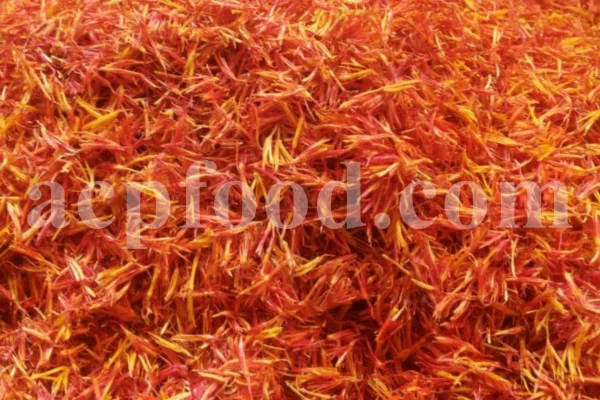
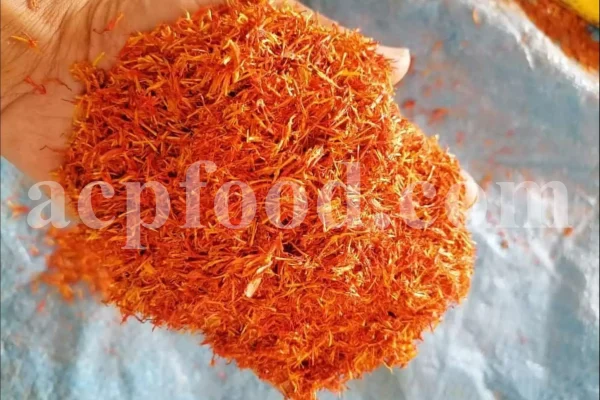
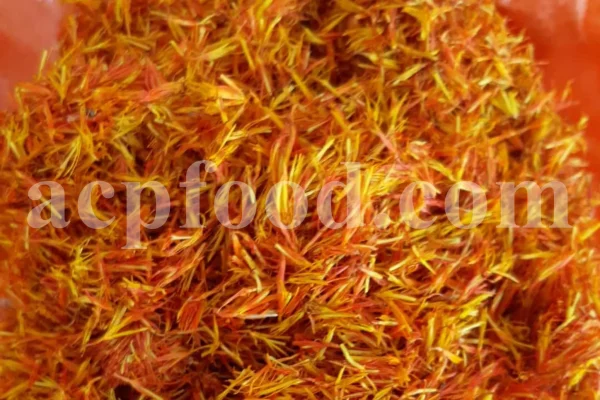
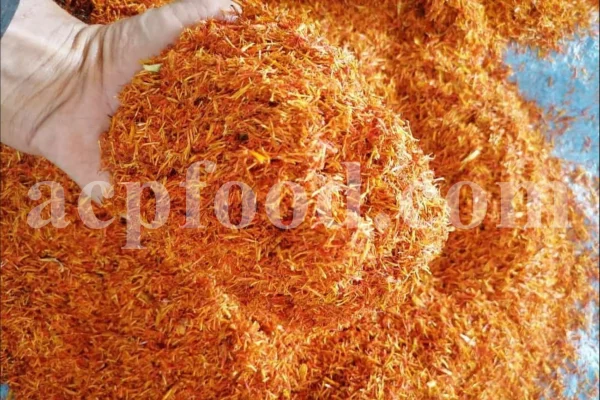
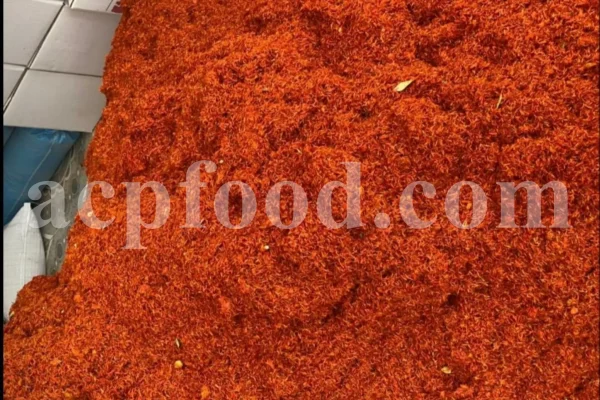
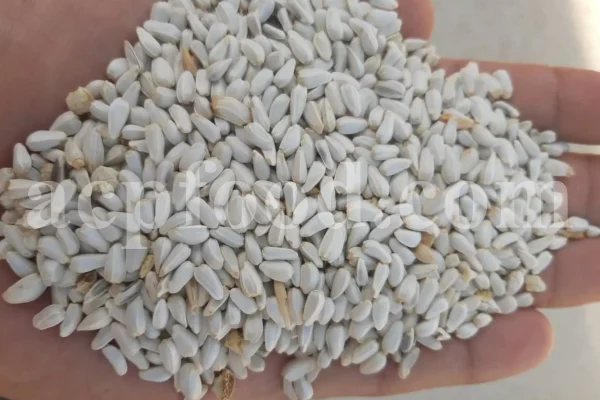
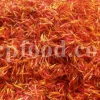
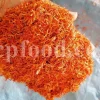
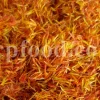
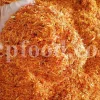
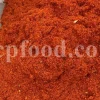
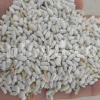
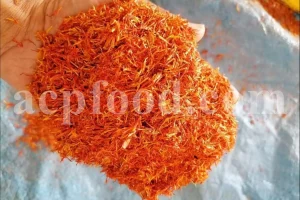
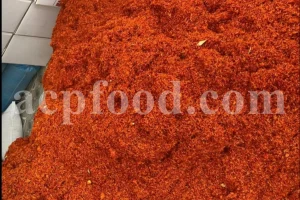
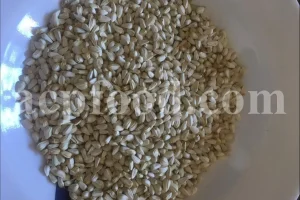
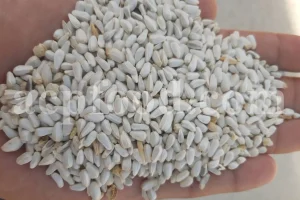

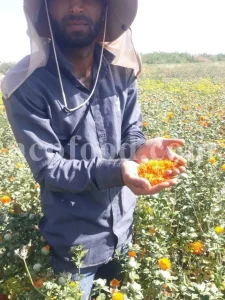
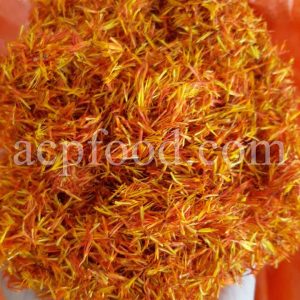
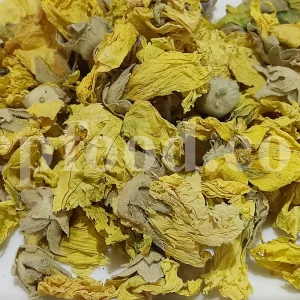
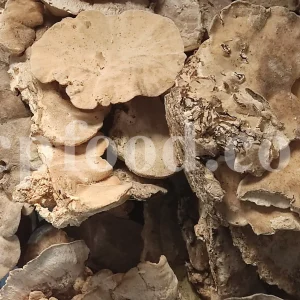
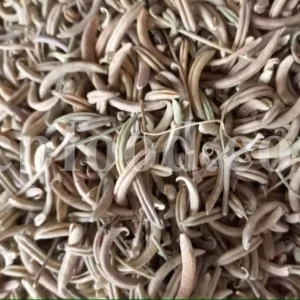
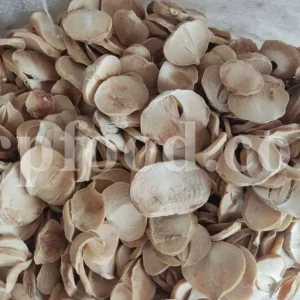
Reviews
There are no reviews yet.